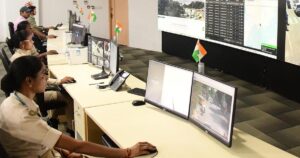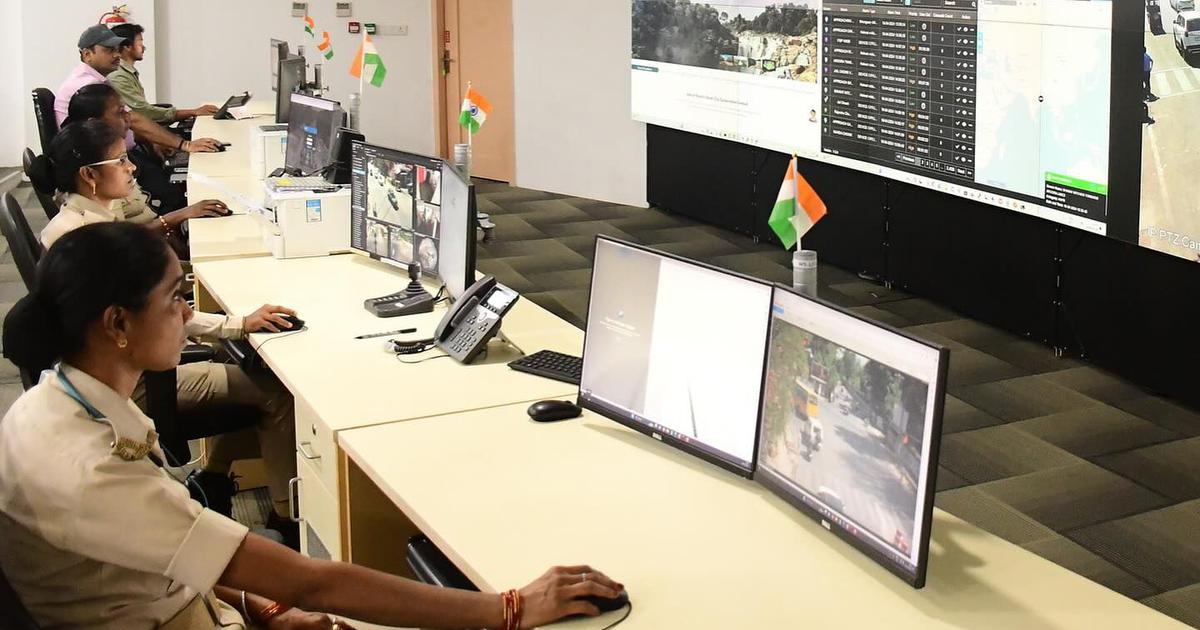Digital infrastructure is used to collect information that is being accessed by businesses, without clear data laws and policies.
 The Smart Cities Mission promised to revitalise India’s cities by ushering in an era of data-driven governance. It suggested that apps would use data to help in the direct delivery of certificates and official documents to residents while municipal revenues could be improved through the online collection of property taxes and billing for services.
The Smart Cities Mission promised to revitalise India’s cities by ushering in an era of data-driven governance. It suggested that apps would use data to help in the direct delivery of certificates and official documents to residents while municipal revenues could be improved through the online collection of property taxes and billing for services.
It also advocated the idea that urban services such as public transport, traffic regulation and waste collection could vastly benefit from data analytics and automation.
Towards this goal, cities such as Bengaluru, Bhubaneswar, Bhopal, and Surat installed a variety of sensors, networks and databases to collect data on public transport, traffic and in some instances solid waste.
Platforms in Integrated Command and Control Centres across the hundred cities picked for the mission would be able to analyse the data acquired from these digital infrastructures to automate urban services.
Data dashboards would assist city authorities in monitoring performance so that decision-making could be improved.
The Ministry of Housing and Urban Affairs issued a Data Smart Cities Strategy issued to guide cities in these datafication attempts. A centralised India Urban Data Exchange aggregated data from the digital infrastructure of 50 cities under the Smart Cities Mission.
But ten years later, the promises of the Smart Cities Mission remain unfulfilled. Instead, behind the veneer of these catchphrases, publicly funded infrastructure and data are being used to hasten the privatisation of urban governance.
Despite the shortcomings of the Smart Cities Mission, data-driven governance and apps continue to be the focus of new urban programmes. In 2021, the National Urban Digital Mission introduced a single app called “Upyog” for all towns and cities in the country to deliver certifications and services to citizens.
This year, Transport Stack projects were launched to introduce public mobility apps for cities such as Delhi, Mumbai and Bengaluru which aim to provide online ticketing, route planning and tracking vehicles.
The attempt to create urban digital data is not new. Over the past four decades, land ownership titles, property tax registers, municipal records such as birth and death registrations have slowly been digitised under Central and state programmes. The National E-Governance Plan of 2006 had given some momentum to these efforts, but many states completed digitising citizens records and unified property records for cities only around 2020 as they received funding under the Smart Cities Mission.
Unified apps were created to replace fragmented National E-Governance Plan websites. These enabled citizens to access certifications, licences and tax collection online without having to visit municipal offices.
The unique contribution of the Smart Cities Mission was the deployment of digital infrastructure to acquire data on vehicle volume and speed, detect traffic violations, monitor public transport vehicles and measure waste collections.
Software in the Integrated Command and Control Centres aimed to improve these urban services by analysing the data to calculate and regulate traffic movement using automated signals, monitor public transport access and performance, and suggest better commuting and waste collection routes through predictive analytics.
While collections of fines have increased through traffic violation sensors, number plate recognition cameras and the centralised Vahan database of information about all registered vehicles, automated traffic regulation systems rarely function as designed during peak hours.
There is scanty evidence of improved access to public transport as Smart Cities Mission apps failed to provide vehicle position information. There is no clear instance of improved waste collection or route planning using data. Pilot projects towards “green corridors” for emergency vehicles were touted across cities but have rarely been implemented.
As a result of these diverse digital infrastructures, the most granular data available in many cities is on public transport, traffic volume and speed, and waste collection. This data has been acquired from across cities and centralised in the India Urban Data Exchange. The exchange promises to use data for the public good by acting as a “data marketplace” by enabling access to academia and industry.
The exchange acquires the data from the city’s infrastructure and allows companies to access it. Without clear data laws and policies, it is unclear who authorises access to this public data and whether it is paid for. For example, Bhubaneswar’s public transport data was made available on the exchange. A company used this data to run its ticketing and bus-tracking app, which was sold as a “solution” to the city’s public transport agency.
Similar apps aimed at traffic regulation, public transport and solid waste management were introduced for cities such as Surat, Bengaluru and Varanasi.
While the digital delivery of certificates, licensing and billing have indeed become faster and efficient through the completion of digitisation, these are actually incremental successes stemming from past e-governance reforms and not of the Smart Cities Mission. The mission merely assisted in completing these initiatives by introducing unified apps to access these services.
The contribution of the Smart Cities Mission in this sphere has been limited to the installing digital infrastructure using public funds. While the information acquired was intended to assist city agencies in improving the quality of urban services, it ended up being commodified through the India Urban Data Exchange.
Industry representatives who create and promote these apps claim they will fulfil the incomplete projects of improved citizens’ and urban services. While these apps are being labelled as “Digital Public Infrastructures” by the ministry and the industry, the only thing “public” about them is the data on which they rely, which comes from decades of government-funded digital projects and infrastructures.
While the Smart Cities Mission and the India Urban Data Exchange promised to improve the quality of urban services, they will serve as a stark reminder that public funds have been used to hasten the commodification and privatisation of our data. It should prompt Indians to question the very premise of data-driven governance and digital public infrastructures as ideal strategies to improve our cities.
Khaliq Parkar is Assistant Professor at the Human Sciences Research Center at the International Institute of Information Technology, Hyderabad. Views are personal.
This article is the fourth in a series marking ten years of the Smart Cities Mission, co-curated by the Centre for Financial Accountability and Scroll. Read all the pieces here.
This article was originally published in Scroll, and you can read here.

